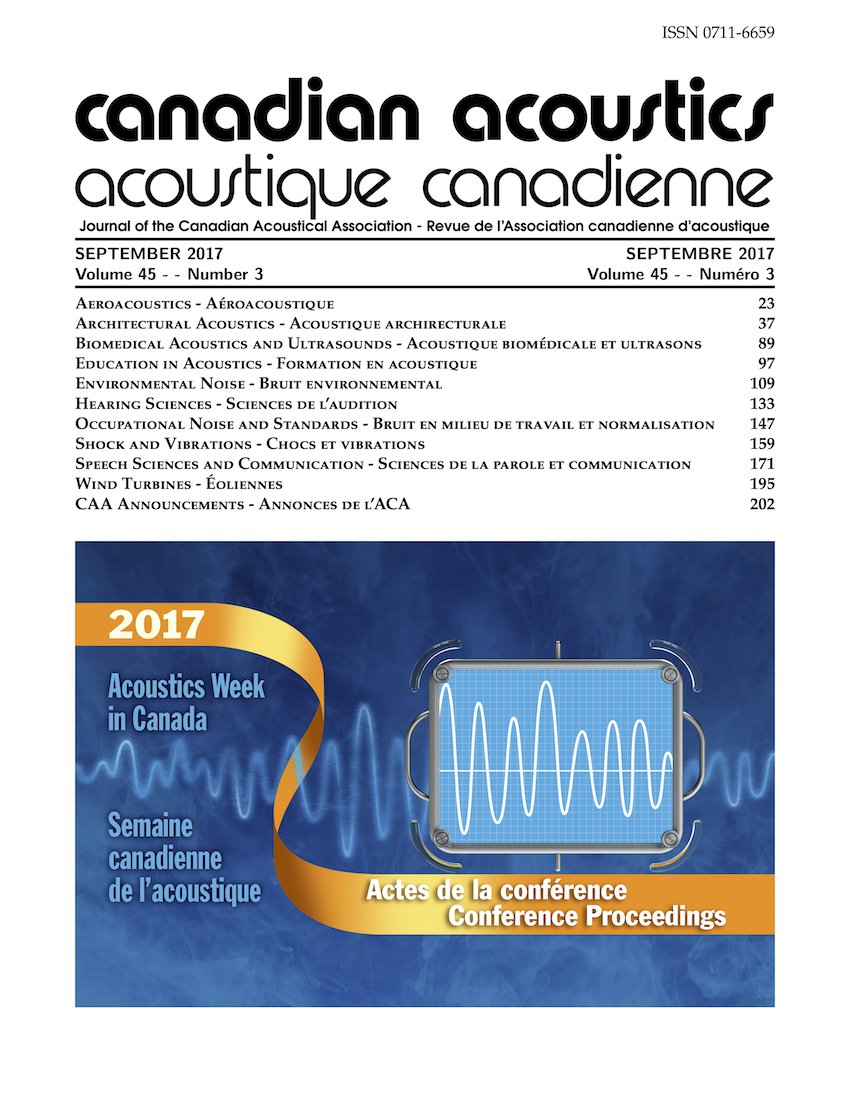A novel approach to counting waves in a room
Abstract
This paper was originally about what we generally call a “reflection counter”. After further study using methods of chaos theory, it was found that the procedure is not a reflection counter but might be more aptly described as a wave counter. For one thing, the so-called “reflection count” was far less than what geometrical acoustical theory would predict, typically in the hundreds rather than the thousands. In a room, positive and negative interference effects seem to “smooth out” reflections and reduce the number of countable waves. As they do with any wave phenomena from waves on the water to the sun in the sky. But according to traditional geometrical theory, reflected sound in a room cannot be so attenuated. Geometrical theory does not include wave effects. But of course the reflections do attenuate, through diffusion, dissipation and, more importantly, wave interference effects. This paper proposes the shift from use of a wave counter to a reflection counter. In acoustics this is a subtle but profound difference.Additional Files
Published
How to Cite
Issue
Section
License
Author Licensing Addendum
This Licensing Addendum ("Addendum") is entered into between the undersigned Author(s) and Canadian Acoustics journal published by the Canadian Acoustical Association (hereinafter referred to as the "Publisher"). The Author(s) and the Publisher agree as follows:
-
Retained Rights: The Author(s) retain(s) the following rights:
- The right to reproduce, distribute, and publicly display the Work on the Author's personal website or the website of the Author's institution.
- The right to use the Work in the Author's teaching activities and presentations.
- The right to include the Work in a compilation for the Author's personal use, not for sale.
-
Grant of License: The Author(s) grant(s) to the Publisher a worldwide exclusive license to publish, reproduce, distribute, and display the Work in Canadian Acoustics and any other formats and media deemed appropriate by the Publisher.
-
Attribution: The Publisher agrees to include proper attribution to the Author(s) in all publications and reproductions of the Work.
-
No Conflict: This Addendum is intended to be in harmony with, and not in conflict with, the terms and conditions of the original agreement entered into between the Author(s) and the Publisher.
-
Copyright Clause: Copyright on articles is held by the Author(s). The corresponding Author has the right to grant on behalf of all Authors and does grant on behalf of all Authors, a worldwide exclusive license to the Publisher and its licensees in perpetuity, in all forms, formats, and media (whether known now or created in the future), including but not limited to the rights to publish, reproduce, distribute, display, store, translate, create adaptations, reprints, include within collections, and create summaries, extracts, and/or abstracts of the Contribution.


